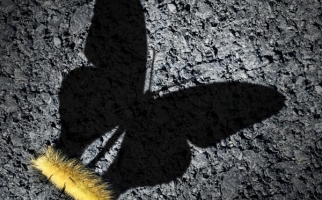
Let’s Talk Careers Competition
Interactives
Join us for Canada’s Most Informed School and Students Competition, participate every fall and spring.

A Virtual Career Fair
Lessons
Students will learn about various careers, and career pathways, through their review of various career profiles.
Students will continue to develop their understanding of the importance of STEM courses/programs for future career pathways.

Exploring Occupational Clusters
Lessons
Students will recognize the variety of careers available in each occupational cluster.
Students will recognize that many of these careers require or benefit from a background in science, technology, engineering and math (STEM).
Students will make personal connections between their interests and current skills to the people profiled.

Learning About Educational Pathways
Lessons
Students will be aware of and understand the importance of, various learning pathways that lead to successful life and work experiences.
Students will become aware of the variety of STEM careers available in each of these different learning pathways.

Exploring Career Types
Lessons
Students will recognize that there are many different ways to earn a living and that a ‘career’ does not necessarily have to be a 9 to 5 arrangement.
Students will recognize that different career types and job arrangements have their own positive and negative aspects.

Making Informed Career Choices
Lessons
Students will learn that possessing the right kind of information is important for making an informed career decision as well as for future career success and stability.

Creating Your Career Documentary
Lessons
Students will engage in a ‘forward thinking’ exercise. This exercise addresses the following: what they want from life, the skills and abilities they have now that are useful for future career decisions, the skills and abilities they will need to develop, and how they are going to connect who they are with who they want to be and what they want to do.

Factors Affecting Career Choice
Lessons
Students explore and discuss factors they should consider when they are planning a career path.

Exploring Motivational Factors
Lessons
Students will explore motivational factors that influence a person’s career on a daily basis.
Students will recognize motivational factors that are similar to their own.
Student will identify the factors that motivate or are important to them as they explore or plan for future career opportunities.

What’s My Lifestyle?
Lessons
Students will realize that high salaries are not always equated with a great lifestyle.

What’s your Plan B?
Lessons
Students will recognize the importance of flexibility and adaptability when it comes to career choices.
Students will recognize that previous education is an asset that provides for great flexibility and adaptability.

BYO Career Development Timeline
Lessons
Students will come to see themselves as people who have skills and knowledge that are valuable to entering the world of work.
Students will recognize that skills and abilities are developed in both formal and informal settings.

Your Personality and the Workplace
Lessons
Students recognize the importance of the connection between life choices and their personal characteristics. Students will make connections between who they are now, the people they wish to become (their future selves), and their connections with work.

What Skills do I Need for the Workplace?
Lessons
Students will deepen their understanding of the concept of employability skills. Students will develop an awareness of opportunities available for those who have well-developed employability skills.
